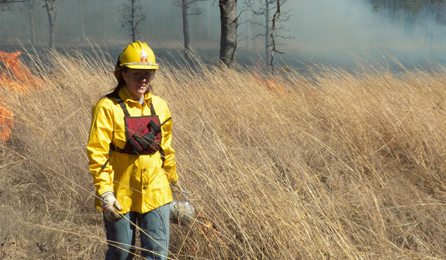Burning with relative humidity below 25% can be tricky as spotfires are likely and suppression becomes challenging. However, under certain circumstances with the proper preparation and a recognition and understanding of the risks, it is possible to safely burn under low humidity conditions. Examples of potential mitigating circumstances include the surrounding area, particularly downwind of the burn unit, is 1) “green” as a result of irrigation practices; 2) recently burned and devoid of fine fuels; 3) a body of water; or 4) bare or fallow agriculture land.
After a low-humidity burn, make sure to mop-up well and mitigate any possible issues near the fire line. Standing trees and down logs can burn for days or weeks in the right conditions. Monitor wind speed and direction as long as the burn unit is still burning or smoldering.







